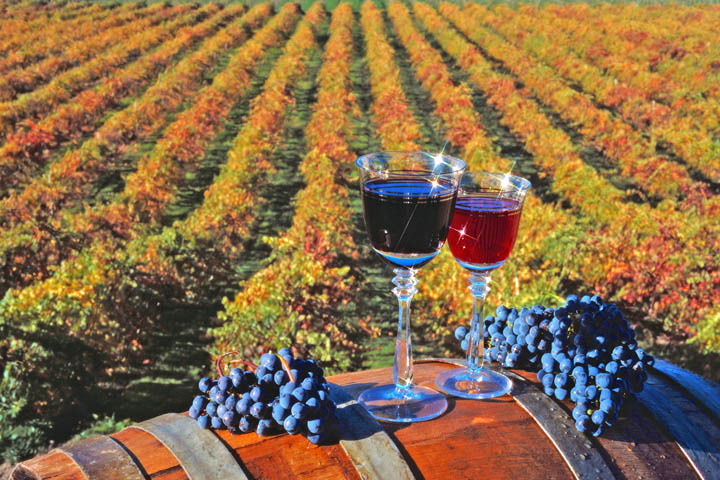
A naive little domestic burgundy without any breeding
Non-California friends often ask me about visiting “California wine country.” My reply is , “You mean Modesto, Fresno and Bakersfield??” Roughly 60 percent of the state’s grapes to make wine comes from the Central Valley.“Wine country” hyperbole needs a little explanatory humor.
January 30, 2014

I am not a “sophisticated” California wine aficionado; however, I love California wine. I drink only California wine. There is nothing better than sitting on the back porch, eating cheese and crackers and drinking a couple glasses of wine while steaks sizzle on the grill.
My time as an agricultural journalist has focused on writing about grape growing. Although wine obviously starts with the grapes, I avoided the wine side of it for many reasons. It seems a bit ostentatious for this old country boy. Nevertheless, I delight in trying new wine labels. There never seems be a shortage of the latest and greatest wine. Just compare a restaurant wine list today with what you can recall at the same restaurant a decade ago. There are likely 10 percent or fewer labels on the list today than were there a 10 years back. The labels may be different, but the wine is not. Just different players in the game most often enjoyed by those who gained wealth outside the wine grape business.
Non-California friends often ask me about visiting “California wine country.” My reply is , “You mean Modesto, Fresno and Bakersfield??” Roughly 60 percent of the state’s grapes to make wine comes from the Central Valley.
Of course, my friends are referring to the rarified wine world of the North Coast and maybe to a lesser degree the Central Coast when they refer to California wine country. It is challenging to compare that world with the real world. No question coastal grapes make better wine by virtue of climate, but that is often taken to excess. “Wine country” hyperbole needs a little explanatory humor like the following from an old newsletter I re-discovered in retirement tossing of old files. It came from the late Rodney Strong who was speaking at a seminar, probably in the late 1970s. Strong was among the North Coast modern day wine grape growing pioneers. His label remains one of the more enduring ones because of that legacy.
“People are attracted to it (winery business) for its aesthetics and its lifestyle. It’s very nice. You don’t have to shave. You can grow a beard. You can wear boots in the living room. You can buy all your clothes at Eddie Bauer’s. You can wear a belt and suspenders at the same time without causing talk. You have a good relationship with college kids, as your product is both ecological and biodegradable. In fact, sometimes the frost, bees and birds make it biodegradable right in front of your eyes about a month before you are supposed to pick it. Even the words of wine are lovely and euphonious — Chardonnay, Cabernet Sauvignon, Wells Fargo, Bank of America. We all love it and wouldn’t trade it for anything in the world, except for something relatively stable with a decent return on investment without fruitflies; allowing you to sleep until 6:30 in the morning and with an absolute guarantee that nobody will ever say to you again, ‘I just love your Peanut Nyoir. It was almost as good as a Reunighty, but I had trouble screwing the cork off.’ We go to a lot of trouble just to be able to pour a friend a glass of wine and say as Thurber did, ‘It’s a naive little domestic burgundy without any breeding, but I think you’ll be amused by its presumption.’”
I still chuckle when I read that.
More from Western Farm Press
Organic rant from unhappy reader; musings from corporate-funded editor
Big Ag goes organic (Come again?)
About the Author(s)
You May Also Like





